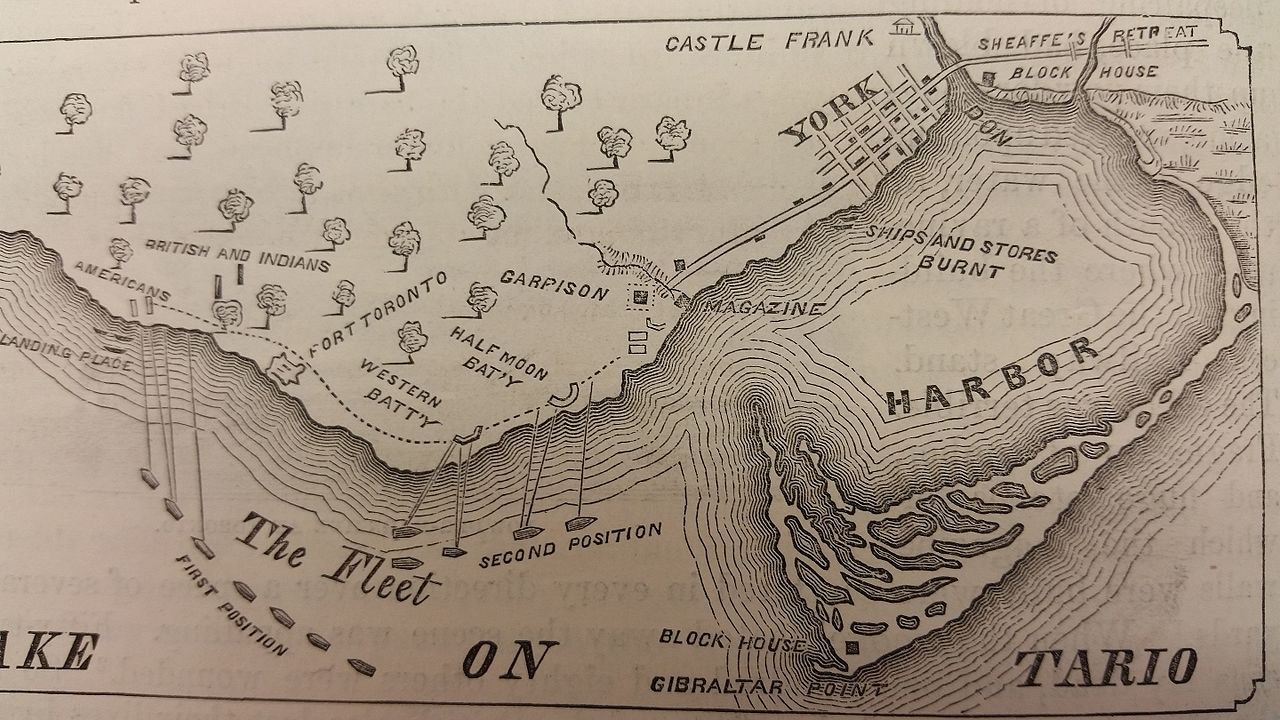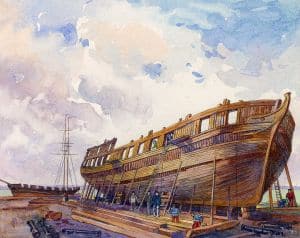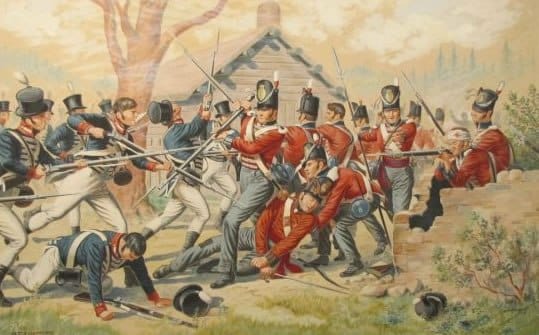The Battle of York was fought on April 27, 1813, in York, the Capital of Upper Canada. It resulted in an American victory when they forced the retreat of the British and their native allies to Kingston.

Although the victory raised American morale, the city of York did not hold much strategic value.
Prelude to the Battle of York
The British took control of Lake Ontario at the outset of the war. Lake Ontario served as a front line of defense to Upper Canada and gave the British Navy the mobility to make quick strikes.
General Isaac Brock had many victories against the Americans until his death at the Battle of Queenston Heights.
However, the British Naval presence in the Great Lakes was small, and with most of Britain’s navy involved in the Napoleonic Wars, they had to build a fleet from the resources found in Canada.
The Americans, under Commodore Isaac Chauncey, began to build their own fleet to fight the British on the Great Lakes.
There was a small arms race to build a fleet to try and control the Great Lakes.
The Americans concentrated most of their troops at the western end of Lake Ontario.
The Fighting
The Americans appeared off York late on April 26, 1813. Chauncey’s squadron consisted of a ship-rigged corvette, a brig, and twelve schooners.
The embarked force commanded by Brigadier General Zebulon Pike numbered between 1,600 and 1,800, mainly from the 6th, 15th, 16th, and 21st U.S. Infantry, and the 3rd U.S. Artillery fighting as infantry.
Henry Dearborn, the overall army commander, remained aboard the corvette Madison during the action.

On April 27, Americans landed about 4 miles outside of York. They were supported by American schooners firing grapeshot.
The British officer in charge of York was General Roger Hale Sheaffe, who had ordered his men to support the Natives.
These men were quickly outflanked and forced to retreat into the woods.
The support became lost on the outskirts of town and was rendered useless in the American flanking maneuver.
General Pike continued to push his men forward, repulsing British grenadier attacks. The British tried to rally but were forced back.
General Sheaffe knew that he would not be able to hold the Americans and that the battle was lost. He set fire to the bridge that crossed the River Don.
This slowed the American pursuit. Sheaffe then ordered his men to retreat from the city of York.
During the retreat, the British destroyed the HMS Sir Isaac Brock and blew up the fort’s magazine.
When the Americans finally arrived in York, they arrived at a depleted town.
They captured some British supplies, but the British army had already begun their retreat to Kingston.

Aftermath
The British suffered about 700 casualties, while the Americans lost about half of that.
Americans were angry over what they believed to be a dishonest surrender. This resulted in the burning of York and many American acts of plunder throughout the city.
Unfortunately, the British were able to retreat and minimize their losses, and the city of York did not have much strategic value despite it being the capital of Upper Canada.
The most significant effects of the capture of York were probably felt on Lake Erie since the capture of the ordnance and supplies destined for the British squadron there contributed eventually to their defeat in the Battle of Lake Erie.
